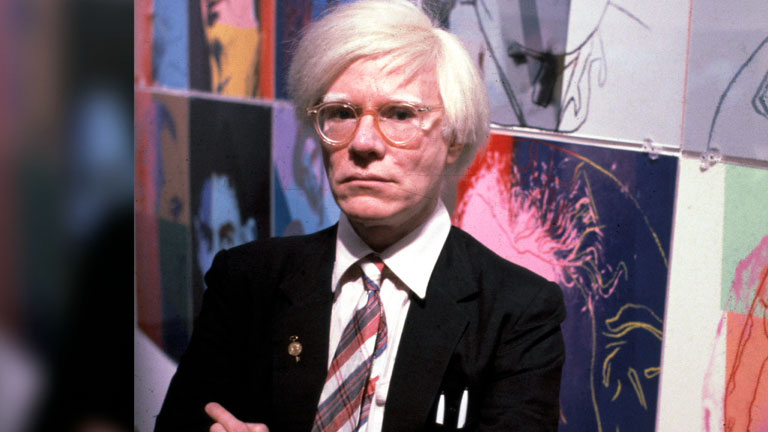ANDY WARHOL, American artist (d. 1987) an American artist who became a central figure in the movement known as pop art. After a successful career as a commercial illustrator, Warhol became famous worldwide for his work as a painter; an avant-garde filmmaker, a record producer, an author and a public figure known for his presence in wildly diverse social circles that included bohemian street people, distinguished intellectuals, Hollywood celebrities and wealthy aristocrats.
Andy Warhol was one of the first major American artists to be open about his homosexuality. Many people think of Warhol as “asexual” and merely a “voyeur”, but these notions have been debunked by biographers (such as Victor Bockris), explored by other members of the factory scene such as Bob Colacello (in his book Holy Terror: Andy Warhol Close Up), and by scholars like art historian Richard Meyer (in his book Outlaw Representation). The question of how his sexuality influenced Warhol’s work and shaped his relationship to the art world is a major subject of scholarship on the artist,and is an issue that Warhol himself addressed in interviews, in conversation with his contemporaries, and in his publications (e.g. Popism: The Warhol Sixties).
Throughout his career, Warhol produced erotic photography and drawings of male nudes. Many of his most famous works (portraits of Liza Minnelli, Judy Garland, Elizabeth Taylor, and films like Blow Job, My Hustler and Lonesome Cowboys) draw from gay underground culture and/or openly explore the complexity of sexuality and desire. Many of his films premiered in gay porn theaters. That said, some stories about Warhol’s development as an artist revolve around the obstacle his sexuality initially presented as he tried to launch his career. The first works that he submitted to a gallery in the pursuit of a career as an artist were homoerotic drawings of male nudes. They were rejected for being too openly gay.
In Popism, furthermore, the artist recalls a conversation with the film maker Emile de Antonio about the difficulty Warhol had being accepted socially by the then-more-famous (but closeted) gay artists Jasper Johns and Robert Rauschenberg. De Antonio explained that Warhol was “too swish and that upsets them.” In response to this, Warhol writes, “There was nothing I could say to that. It was all too true. So I decided I just wasn’t going to care, because those were all the things that I didn’t want to change anyway, that I didn’t think I ‘should’ want to change … Other people could change their attitudes but not me”.
In exploring Warhol’s biography, many turn to this period – the late 1950s and early 1960s – as a key moment in the development of his persona. Some have suggested that his frequent refusal to comment on his work, to speak about himself (confining himself in interviews to responses like “Uh, No”and “Um, Yes”, and often allowing others to speak for him), and even the evolution of his Pop style can be traced to the years when Warhol was first dismissed by the inner circles of the New York art world.
